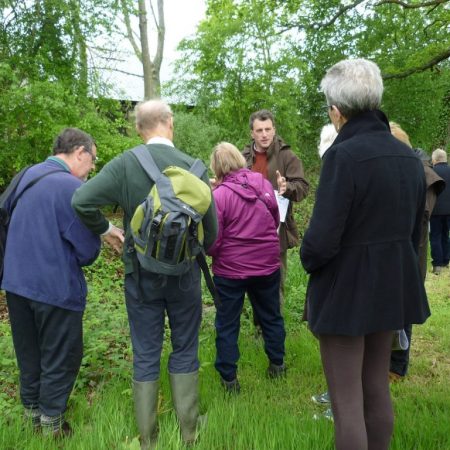Romsey and its waters enthral local researchers
Romsey has one of the most active and best organised local history societies in the county. Twice a week in the basement of Romsey Town Hall local historians hold a workshop. They may be working on their own projects, organising local events, or helping people who drop by– with queries, donations of photos or documents, or just because they want to join the Romsey Local History Society.
The premises are a great asset – very rare for such groups (another example is Liphook Heritage Centre) – leased from Romsey Town Council. It’s ideal for their archive, a rich collection of books, photographs (digital and prints), maps, and other key sources including copies of local newspapers dating from 1859, most accessible on four networked computers.
There is a payback for the Council: for 20 years Barbara Burbridge and others have been organising the town’s archives, weeding out duplicates and sending key records to the Hampshire Record Office. Past mayors owe her a favour too, as their portraits are now carefully preserved and catalogued.
The society has roots in the mid-1970s, when Test Valley District Council (now a Borough) funded Kevin Stubbs to direct the Test Valley Archaeological Trust and local volunteers combined to form the Lower Test Valley Archaeological Study Group (LTVAS). In fact that is still the group’s formal name, and it is involved with archaeology as well as history. Over the past six years, aided by a generous bequest and Winchester University and coordinated by Phoebe Merrick, the group has studied the locality in Saxon times– landscape, archaeology, and social history, notably iron smelting. Using QGIS software on maps, together with LiDAR data, Colin Moretti has created a geographical and geological database. Using this on maps and reinterpreting Anglo-Saxon charters, Mary Harris, the group’s chairman, and Karen Anderson have discovered that, amongst other things, the Fishlake–which carries water from the Test a mile north of Romsey along an aqueduct– was probably built by the Anglo-Saxons in the 10th century to provide water for the abbey and the town.
The work has shown how the positions of the alluvial plain and the river terraces of the Test have influenced the layout of the town and the engineering of water flows over the centuries. And the iron-smelting that was carried out in the area is probably reflected in the name Romsey, which either means ‘island of soot’ or ‘sooty blackened island’, though the exact use of the relevant Old English words hrúm (soot), hrúmig (sooty) and rómig (blackened sooty) are difficult to determine.
The findings will be published and added to the society’s other publications–on the polymath Sir William Petty FRS– economist, physician, scientist and philosopher – on mills and the waterways of the Test, on schools and much else. Their History of Romsey is one of the best researched town histories in print.
Romsey Abbey is celebrating the 900th anniversary of the building of the Norman church, though the foundation was earlier. According to tradition it was actually founded in 907AD, with Alfred the Great’s grand-daughter Elfleda as the first abbess. From 959AD under King Edgar it followed the Rule of St Benedict. It was a well-endowed foundation and in1120 a programme of building the present church was commenced. It was to last 130 years. The building itself was lucky to survive, but was saved from demolition during the Reformation by the townspeople buying it from the Crown and making it their parish church.
Romsey was for many years a centre for cloth-finishing and leather trades, including the making of shoes and gloves. The cloth-finishers can be tracked from records of a tax called ulnage, introduced by Edward III in 1353.
For more than a century the town was probably best known as the home of Strong & Co. of Romsey Ltd, with its colourful advertising posters. It stopped brewing in 1981 and finally closed in 1990. One of the most glorious moments of Strong’s was probably in July 1944 a month after D-Day when a Spitfire flew to Normandy with a cask of beer for the troops suspended from each wing. To avoid red-tape they were classified as ‘XXX Depth Charge Fitments’.
Beer, too, has featured in the most successful publication of the society, namely, its first and best-selling book, a history of the local pubs and inns, So Drunk He Must Have Been to Romsey.

